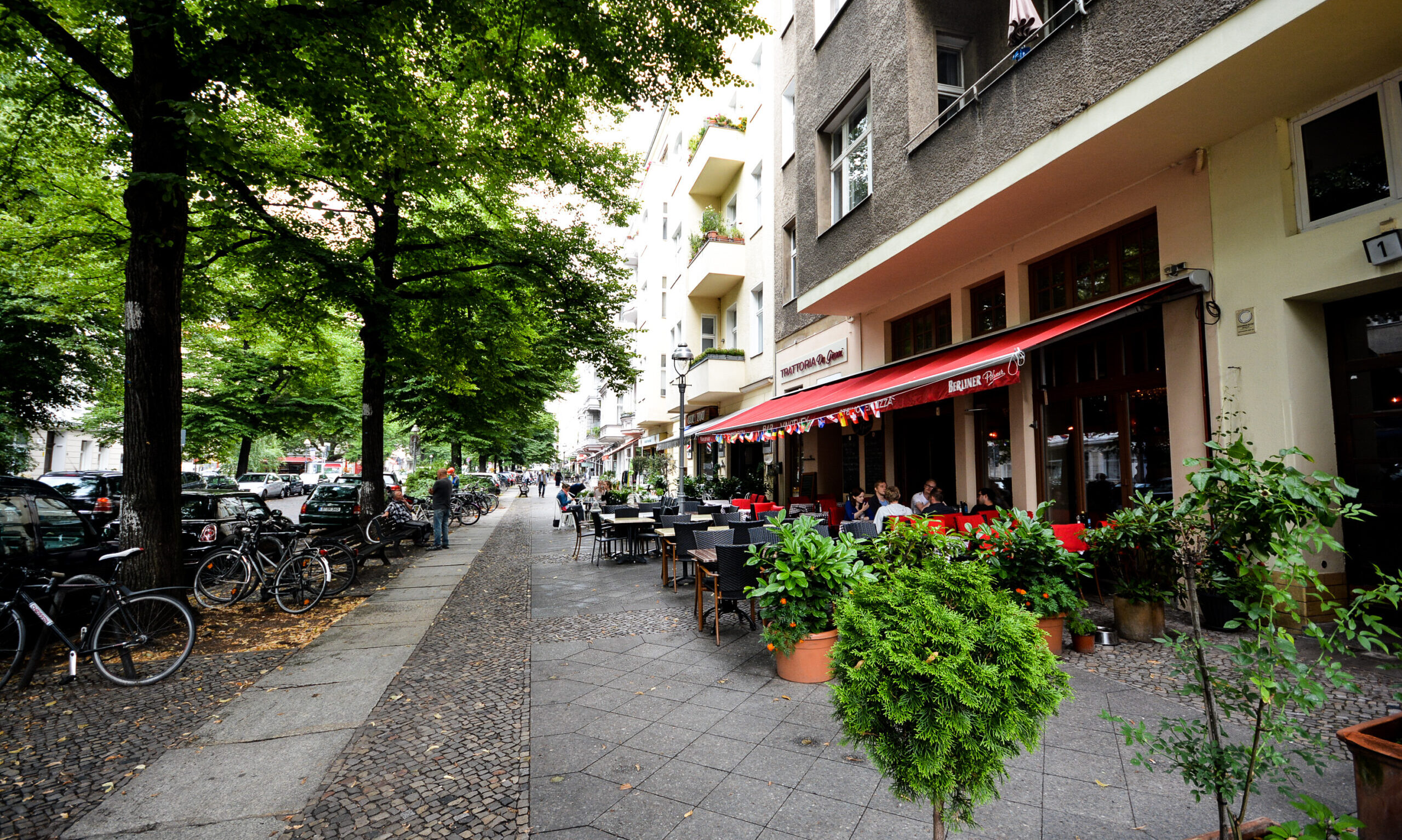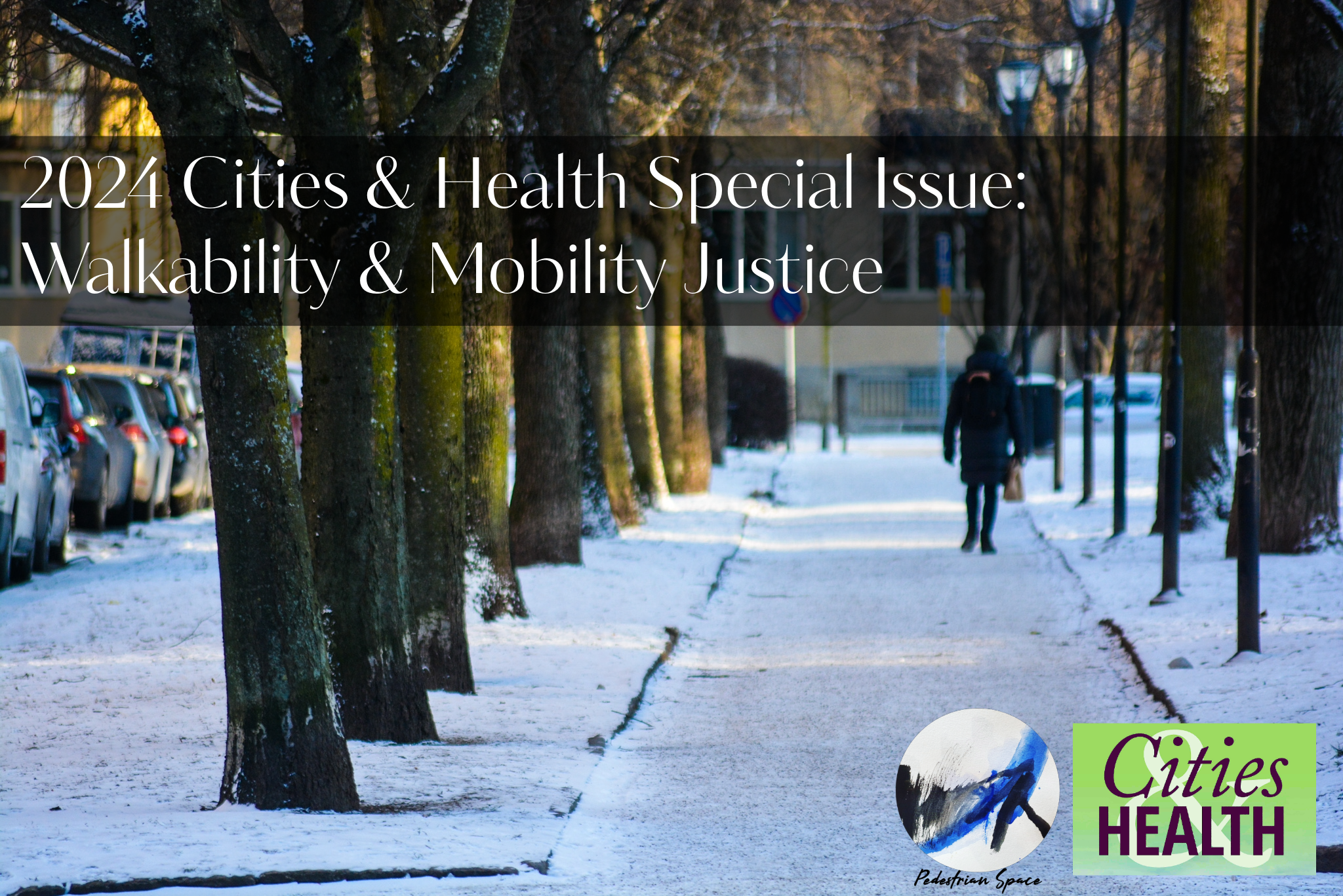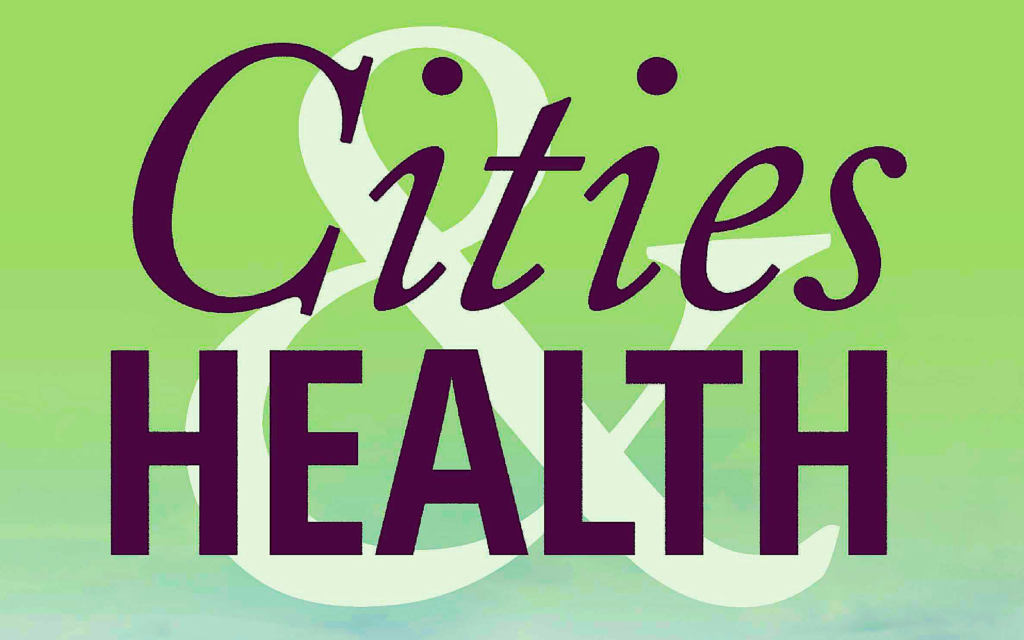
Thanks to the Bristol-based Cities & Health team, I’ve been designated as the lead guest editor for this special issue and will have a global team of guest editors to collaborate with.
In looking to shape a dedicated, geographically diverse team for this special issue, I had this great opportunity to expand my ever-growing network of walkability-minded advocates, academics, professionals, and more.
-Annika
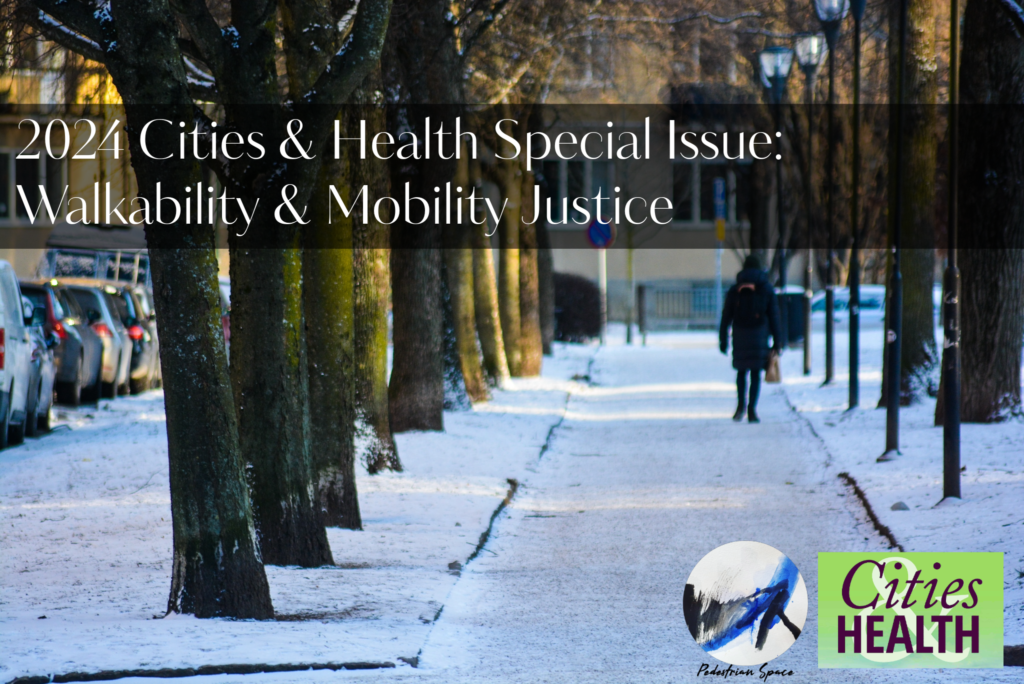
Submit a Manuscript to the Journal Cities & Health for a Special Issue on Walkability & Mobility Justice: Planning for walkable, equitable & healthy communities across continents, countries & cultures
This special issue, ‘Walkability and Mobility Justice: Planning for walkable, equitable & healthy communities across continents, countries & cultures’, is initiated by Pedestrian Space in collaboration with The Schumacher Institute with the aim of bringing a diverse lens of awareness to the various challenges of addressing walkability concerns across cultures and continents.
The special issue will investigate the prioritisation of the development of walkable communities as a critical urban health issue, connecting to themes such as spatial equity, environmental protection, urban resilience, sustainability, human mental and physical health, and social resilience.
We welcome submissions from scholars and practitioners across the globe who consider walkability as they research urban issues, test practical applications at the city or neighbourhood scale, or can offer case studies of good practice. We are interested in examining barriers to, and overcoming aspects of, mobility justice to enhance walkability for urban health.
Thematic challenges and key questions
Evidence is clear that enhancing walkability in communities can offer numerous benefits, countering a dominant logic of car-centric development. More walkable neighbourhoods offer many positive outcomes, including improved physical and mental health, benefits for environmental sustainability, fostering social interaction, supporting local economies and reducing multiple disbenefits of traffic congestion. What is lacking across cultures is a demonstrated will to act in order to address and resolve numerous and severe issues of mobility justice. While substantial research does exist, there is a disconnect between the data and will to act.
One focus for mobility justice is in creating and sustaining walkable neighbourhoods; a significant action for both health and health equity. Such action is relevant across many countries and cultures and has clear ramifications on policies and investment when considering transport infrastructure and the quality of pedestrian space and life and effect on social and environmental justice and health. The role of truly transdisciplinary research in shaping understanding on contemporary issues of mobility justice is vital as are grassroots actions and policies that support the planning and preservation of walkable communities.
This special issue will focus on three main strands:
Social and environmental justice and health in the context of walking
- How can we best address the underlying disparities in transportation access towards solutionary approaches for mobility justice?
- How can we ensure that marginalised communities are being equitably served by urban planning and policy decisions that affect local mobility?
- What are the relationships and impacts of various dimensions of identity (including sex, ethnicity, race and religion) on experiences of walking?
Transdisciplinary approaches to research and action
- What are the dominant critical discourses in policy and practice around walkability in research, policy and practice from a perspective of justice and health?
- Where can we find innovative approaches to participatory research on walking?
- Can we learn from experiences of transdisciplinary research on walking in different urban contexts?
Policy and grassroots actions to promote walkability and health equity
- To what extent have actions been successfully implemented to nudge behaviour change to promote modal shift toward walking?
- How do community-based actions and initiatives improve walkability from a perspective of equity and health?
- What continental, country based and cultural examples exist of case studies of walking-focused action and implementation research that have led to positive outcomes for equity and health?
Read about the special Guest Editorial Team below
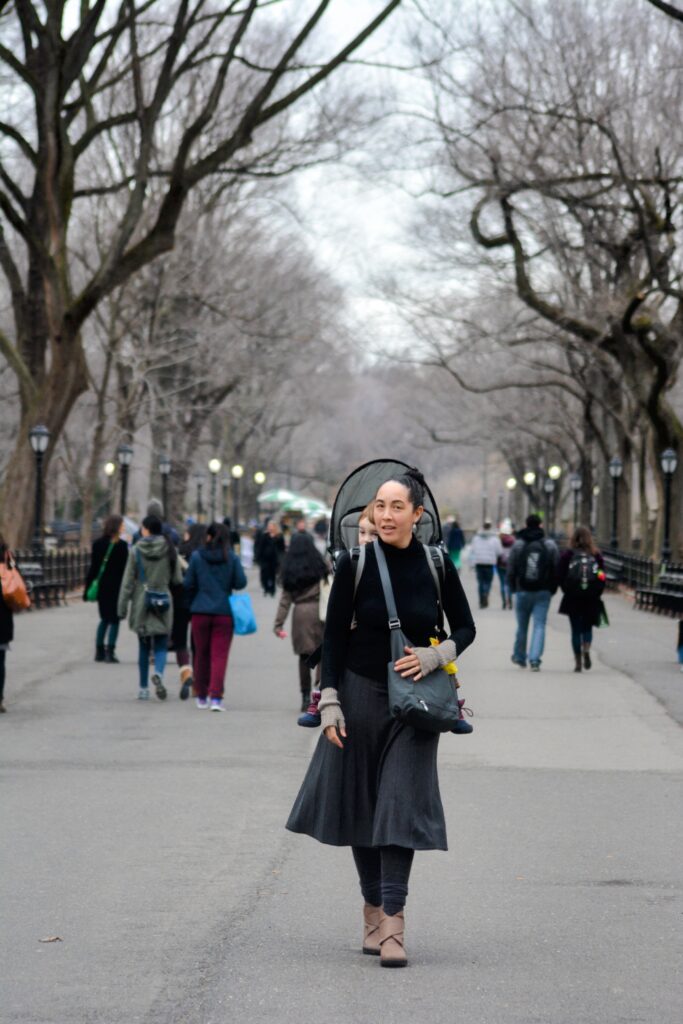
Annika Lundkvist, Lead Guest Editor
Warsaw, Poland
Pedestrian Space
Annika is the founder of Pedestrian Space, a platform and NGO dedicated to walkability and urban resilience issues. She is a fellow of the Bristol-based Schumacher Institute and a PhD Student at the Warsaw-based Institute of Geography & Spatial Organization (Polish Academy of Sciences), where she researches walkability as a quality of life factor in a 15-minute city context. She is also the founder of the Global Walkability Correspondents Network, an international collective of professionals and advocates championing sustainable mobility, and co-founder of Urban Transit Lab. She loves exploring jazz, plant-based cooking, discovering cities by foot and collaborating with passionate people globally,
Favorite mode of mobility: Walking, Metro, Tram
How did you get involved with issues of walkability?
Annika: During the beginning phases of the pandemic in 2020, my interest was piqued by all of the dialogue and activity happening around streets and public spaces as a response to lockdowns, restrictions in movement, and more. I established @pedestrianspace to begin documenting best practices and barriers of walkability that I was observing in the central Scandinavian city I was living in (which I also viewed as a textbook example of a 15-minute city). The activity later led to the Pedestrian Space website, the establishment of the Global Walkability Correspondents Network, and, ultimately, my current research. Pedestrian Space is today an NGO committed to media advocacy, education, research, and communication on walkability’s critical role for sustainable urban development and healthy, equitable communities.
In looking to shape a dedicated, geographically diverse team for this special issue, I had the great opportunity to expand my ever-growing network of walkability-minded advocates, practicioners and others working at diverse intersections of mobility, transportation, planning, built environment, and community well-being. It is a great opportunity to lead guest edit this special issue and I look forward to collaborations with this team and the Cities & Health editors.
-Annika on being a lead guest editor for the Cities & Health special issue ‘Walkability & Mobility Justice’
What are your interests and main concerns regarding mobility justice?
Annika: I’ve observed and experienced how cities can be designed and developed with spatial equity in mind across neighborhoods. I know it is possible yet still, in communities in diverse societies, walkability as a feature can be connected with privilege and gentrification. I’m interested in championing walkability as a civic right, that all urban dwellers deserve. My media advocacy and walkability research is holistic and necessitates ongoing learning and understanding of how diverse inhabitants’ needs can be accommodated for more inclusive and liveable cities.
How do you view the relationship between walkability, mobility justice and urban health?
Annika: Walkability is vital for urban health. We are, in fact, in a crisis in many societies with pedestrian deaths and subpar conditions for those walking. Decades of car-centric planning have rendered so many communities un-walkable that for many, the choice to drive is synonymous with having a functional life, as public transportation and safe, quality pedestrian infrastructure do not exist. In many cases, marginalized communities are not developed with spatial equity in mind, and issues of transport exclusion can be found in societies worldwide. Sustainable mobility is on the agenda for some world regions, while in others, the trajectory is completely opposite, with driving being an increasingly aspirational mode associated with progress and modernity.
We need ongoing and truly inter- and transdisciplinary (communities, NGO’s, academics, practitioners) working for mobility justice in our local communities and developing solidarity and knowledge exchange globally. I hope that this special issue can contribute to that need.
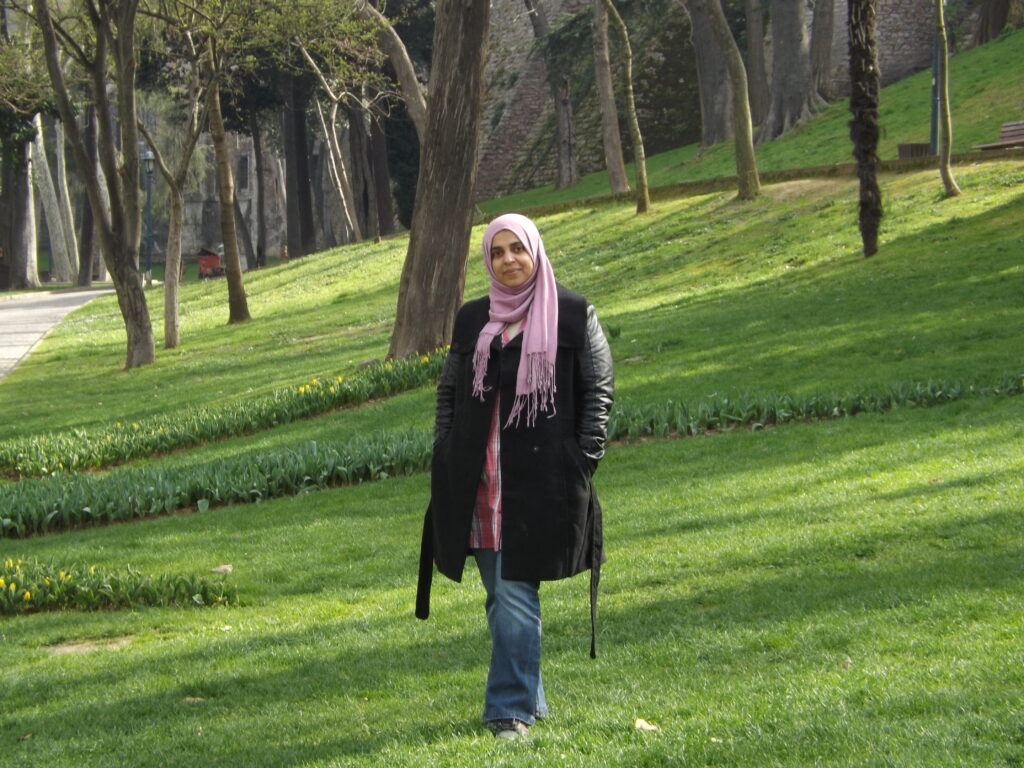
Alshimaa Aboelmakarem Farag, Guest Editor & Adviser
Egypt
Zagazig University
Alshimaa is a researcher and educator in the field of urban design, who is particularly passionate about advancing human-based built environments. Her areas of research interest are ecological psychology, travel behaviors, and urban mobility. In 2020, she co-edited the book “Humanizing Cities through Car-Free City Development and Transformation.” She is currently endeavoring to research further on advancing innovative urban strategies that promote sustainable mobility alternatives. Her mission is to find effective strategies to mitigate environmental pollution and address the pressing issue of climate change due to transportation while simultaneously fostering livable and human-centric environments where people live and work, enjoying a healthy life.
Favorite mode of mobility: Walking, Biking, Buggy, Train, Car
How did you get involved with issues of walkability?
Alshimaa: From a professional perspective, my area of expertise lies in urban design. Throughout my years of studying and conducting research, I have developed research interests in walkability, sustainability, and improving humanized cities. I have conducted extensive research on this particular topic and have actively contributed to the editing of a book that focuses on the concept of humanized and car-free cities and strategies for decreasing reliance on private cars for a cleaner environment and healthier life. From a personal perspective, I saw how quickly my small hometown in Egypt, where walking, bicycling, and buses were the favored modes of transit, has changed into a car-centric city in a few years, losing its soft fabric and friendly pedestrian streets. Furthermore, my experience has been shaped by living in Gulf countries for more than 10 years, where reliance on private vehicles and cars is high, and major obstacles are posed by personal habits, culture, and behavior despite the detrimental consequences driving has on one’s health and environment. Traveling to many other countries has exposed me to how different communities have various preferences and choices, as well as the influence of policies on mobility options and the pursuit of mobility justice, all of which have implications for public health. I am passionate about finding ways to encourage mobility justice while promoting car abandonment with its many challenges.
Aside from my passion for engaging in scientific research on interesting subjects like walking, social justice, and public health, and their significant influence on people’s quality of life and the environment, I also derive great satisfaction from collaborative learning, assisting others in their research endeavors, and gaining insights from the experiences of my peers.
-Alshimaa on being part of the guest editorial team for the Cities & health special issue ‘Walkability & Mobility Justice’
What are your interests and main concerns regarding mobility justice?
Alshimaa: I am mainly interested in strategies to promote change in people’s travel behavior toward more sustainable and active travel options and the influence of the built environment morphologies to achieve equitable access.
How do you view the relationship between walkability, mobility justice and urban health?
Alshimaa: Walkability, Mobility Justice, and Urban Health are interdependent concepts. Walkability refers to urban spaces prioritizing pedestrians, Mobility Justice aims to ensure everyone has equitable access to all mobility modes regardless of physical ability, income, age, or other factors, while simultaneously, Urban Health is influenced and requires addressing both. By encouraging walking and cycling, which are beneficial forms of physical activity, walkable cities contribute to healthier populations with lower risks of chronic diseases like obesity, heart disease, stress, and diabetes. If not designed inclusively, walkable spaces can create mobility barriers for people with disabilities, older adults, and families with young children. This lack of mobility justice can hinder their access to essential services and limit their participation in community life, negatively impacting their well-being and physical and mental health. Therefore, achieving true urban health requires creating cities that are walkable and also accessible, equitable, and supportive of the well-being of all residents.
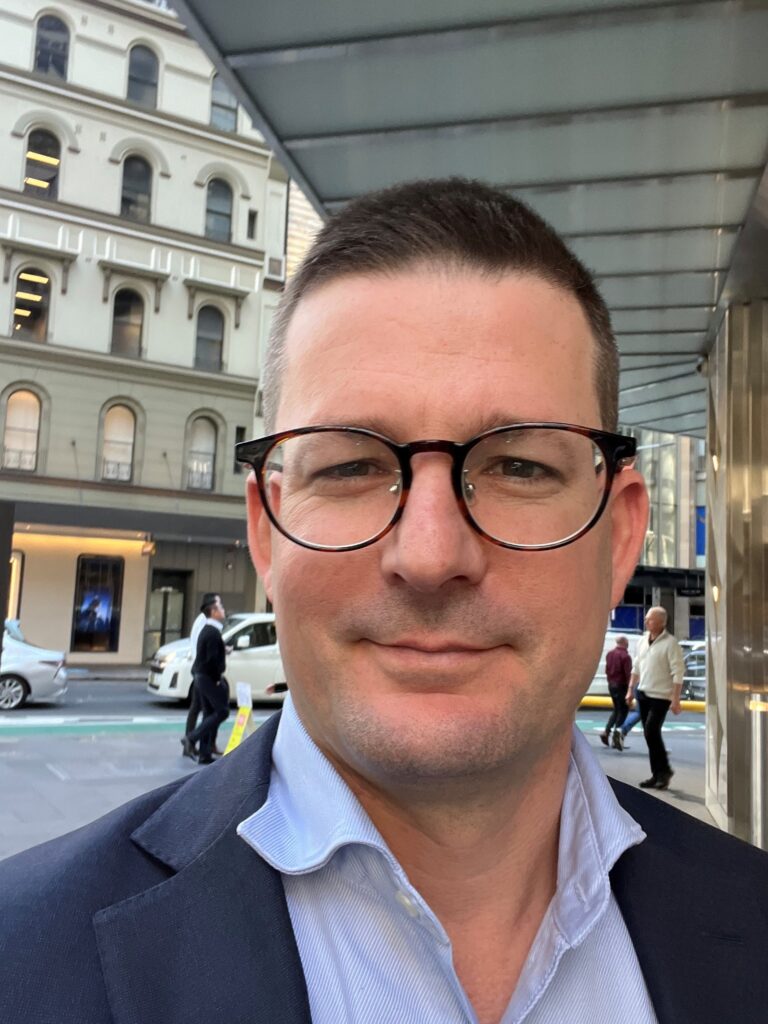
Sam Barr, Guest Editor
Sydney, Australia
Global Infrastructure Hub
Sam is an infrastructure economist by training who currently works for the Global Infrastructure Hub, a part of the G20. He has been working in infrastructure and public policy for the last fifteen years and is a strong believer that cities are a great engine of human progress – and so making cities a place where social and economic inclusion are driven by good policy and investment decisions is critical.
Favorite mode of mobility: I’m a train fan! And walking.
How did you get involved with issues of walkability?
Sam: My interest in cities and infrastructure led me to be interested in walkability and mobility. The way people get around their cities is so important for social and economic inclusion.
What are your interests and main concerns regarding mobility justice?
Sam: Fair use of finite resources. Nobody should be left behind when governments develop their infrastructure investment plans, which goes directly to mobility justice.
How do you view the relationship between walkability, mobility justice and urban health?
Sam: All three concepts are closely related. How we plan for, invest in, design, and build our cities and our mobility infrastructure all have an impact on mobility justice. And equitable access to mobility assets are a key driver of urban health.
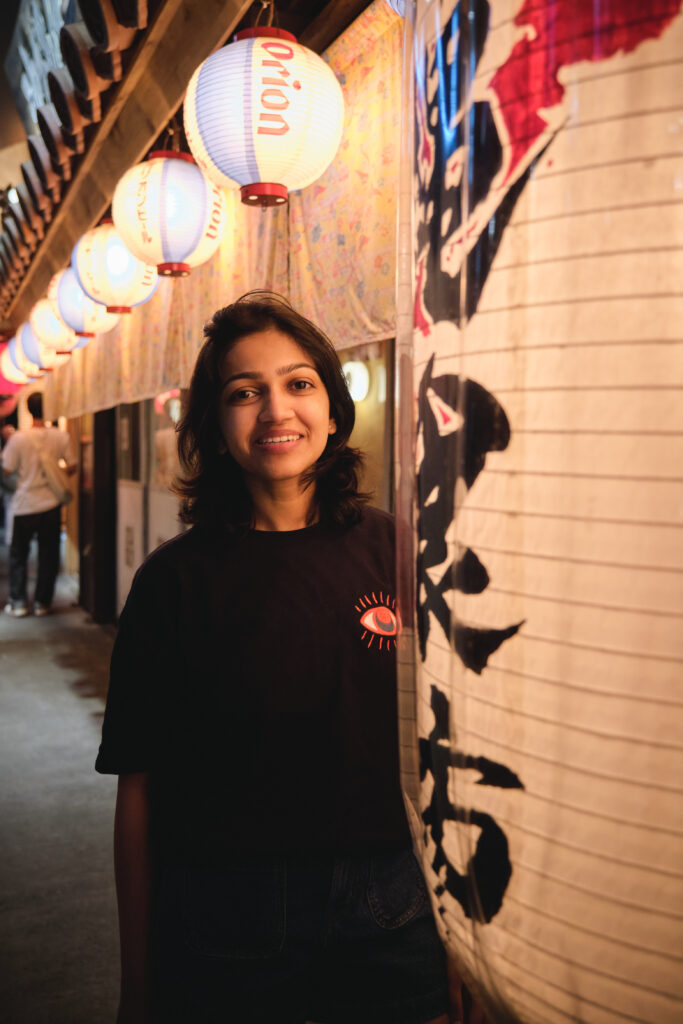
Maria Katticaran, Guest Editor
Oakland, California, USA
HDR
Maria Katticaran is an architect and urban designer, leveraging her expertise at HDR to spearhead transformative projects that redefine the urban landscape. With a keen focus on community-centered and equitable design, she has played a pivotal role in shaping mega-projects across North America and India, from the iconic Union Station in Los Angeles to the Ontario Line in Toronto and the revitalization of Pittsburgh International Airport. Maria’s dedication to environmental justice, health, and equity outcomes shines through in her work, where she champions mobility solutions that prioritize accessibility and inclusivity, fostering healthier and more vibrant cities for all. Beyond her professional work, Maria has an adventurous spirit and love for exploring new cities and cultures, which enriches her approach to design and problem-solving.
Favorite mode of mobility: Train, Electric Bike, Roller Blades
How did you get involved with issues of walkability?
Maria: My involvement with walkability issues stems from a confluence of personal experiences, grassroots community planning endeavors, and professional work in urban design and transportation architecture. From navigating challenging footpaths with my elderly grandmother in Kochi to understanding the intricate relationship between the built environment and public health outcomes, I’ve come to see walkability as a fundamental equalizer in cities, ensuring equitable access to opportunities for all residents. In my professional role, I prioritize designing environments that prioritize pedestrians, advocating for inclusive mobility, and creating cities that are vibrant, livable, and equitable. Through these experiences, I am dedicated to promoting walkable environments that enhance social equity, health, and quality of life for all.
I am thrilled about the opportunity to be part of this editorial team because it allows me to contribute to building a community of practitioners who share a passion for creating vibrant and healthy urban environments. This aligns perfectly with my own dedication to promoting walkability as a key element of urban design and community development, and I look forward to contributing to the collective effort to build healthier, more livable cities for everyone.
-Maria on being part of the guest editorial team for the Cities & Health special issue ‘Walkability & Mobility Justice’
What are your interests and main concerns regarding mobility justice?
Maria: My interest in mobility justice lies in advocating for equitable access to transportation for all, regardless of background. I’m concerned about existing disparities in access to public transit and infrastructure, which can exacerbate economic inequality and limit opportunities. Affordability, safety, and accessibility are key concerns, especially for vulnerable road users. I’m also concerned about how transportation investments can contribute to gentrification and displacement, undermining efforts to achieve equity.
How do you view the relationship between walkability, mobility justice and urban health?
Maria: The relationship between walkability, mobility justice, and urban health is evident in historically redlined communities like West Oakland, where discriminatory policies and infrastructure decisions have disproportionately impacted residents’ well-being. The legacy of redlining and the construction of freeways have led to inadequate pedestrian infrastructure, limited access to public transportation, and increased exposure to environmental hazards. As a result, residents face higher rates of chronic diseases and experience barriers to physical activity and healthy living. Addressing these challenges requires a holistic approach prioritizing equitable urban planning, investments in walkable infrastructure, and community engagement to create healthier and more inclusive urban environments for all residents.
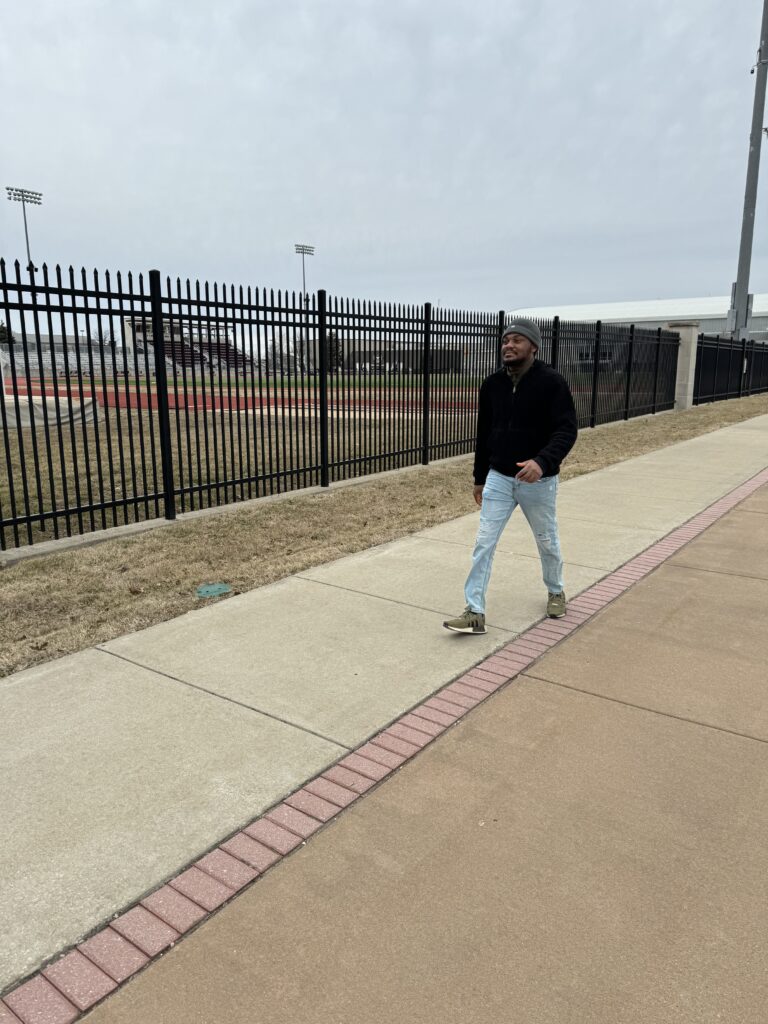
Yetimoni Kpeebi, Guest Editor
Springfield, Missouri, USA
Missouri State University
From his early days in northern Ghana, cycling was not only common but essential, yet it was hampered by inadequate infrastructure. These experiences have directed Yetimoni’s focus towards urban health and mobility, to make cities more accommodating for cyclists and pedestrians. His research work is a blend of personal passion and professional ambition, aiming to transform urban spaces into safer, more inclusive environments for all.
Favorite mode of mobility: Walking, Cycling, High-speed rail
How did you get involved with issues of walkability?
Yetimoni: My journey into the realm of walkability began with my arrival in the United States for graduate studies. I found myself in a city where, despite a somewhat better situation than I had experienced in northern Ghana, the availability of sidewalks and pedestrian-friendly infrastructure was still lacking, evidenced by a walk score of about 34, indicating poor walkability. This direct encounter with the challenges of navigating an urban environment as a pedestrian ignited my passion for addressing walkability as a critical aspect of urban planning. As an urban planning professional and researcher, my experiences have fueled an interest in improving pedestrian infrastructure to enhance the quality of urban life. Motivated by the gap between the existing urban fabric and the ideal of accessible, pedestrian-friendly cities, I have dedicated myself to conducting cutting-edge research on walkability. My work aims to deepen the understanding of walkability issues and inform and shape effective policies that promote safer, more inclusive, and walkable urban environments. Through my research, I strive to uncover innovative solutions and advocate for integrating walkability principles into urban planning and development processes. My goal is to contribute to transforming urban spaces into places where walking is not just possible but enjoyable and safe for everyone. My involvement in walkability issues is not just professional; it’s a personal commitment to creating better cities for future generations.
As urbanization continues to accelerate globally, the importance of equitable mobility solutions becomes increasingly critical. I am eager to spotlight groundbreaking ideas and practices that address mobility injustices and ultimately influence policy, planning, and community initiatives toward more inclusive and sustainable urban environments. Being part of the guest editorial team excites me for its potential to advance understanding, foster collaboration, and drive meaningful change in the realm of mobility justice.
-Yetimoni on being part of the guest editorial team for the Cities & Health special issue on ‘Walkability & Mobility Justice’
What are your interests and main concerns regarding mobility justice?
Yetimoni: My interest in mobility justice stems from a broad understanding of the challenges and inequities communities face in developing countries, particularly concerning “transport poverty.” This term refers to a situation where individuals and communities lack adequate access to affordable, reliable, and safe transportation options. It’s a barrier that restricts physical mobility and limits access to essential services, employment opportunities, and social interactions, further entrenching cycles of poverty and social exclusion. Coming from a developing country, my main concern revolves around how transport poverty exacerbates existing inequalities, making it a pressing issue of mobility justice. It’s clear that without addressing the underlying disparities in transportation access, efforts toward sustainable development and social equity are significantly hindered. My interest lies in exploring comprehensive solutions related to policy reforms, infrastructure development, and community engagement to ensure equitable access to mobility for all, regardless of socioeconomic status. Furthermore, I am particularly concerned with how urban planning and policy decisions can often overlook the unique needs of marginalized populations, leading to a widened gap in mobility justice. This concern drives my research and advocacy efforts toward promoting a more inclusive approach to transportation planning—one that prioritizes the voices and needs of those most affected by transport poverty.
How do you view the relationship between walkability, mobility justice and urban health?
Yetimoni: I view the relationship between walkability, mobility justice, and urban health as a fundamental framework for understanding and improving urban environments. At its core, walkability refers to how friendly an area is to walking. It affects not only the physical activity levels of its residents but also their access to essential services and social opportunities. This concept is intrinsically linked to mobility justice, which advocates for equitable access to safe, affordable, and convenient modes of transportation for all individuals, regardless of socio-economic status, age, or ability. Mobility justice ensures that the benefits of walkable communities—such as reduced environmental pollution, enhanced social interaction, and increased economic activity—are accessible to everyone, not just a privileged few. This inclusivity is vital for fostering urban health, which encompasses the physical, mental, and social well-being of urban residents. Urban health is directly influenced by the built environment, including the availability of pedestrian infrastructure, green spaces, and public transportation. In essence, walkability contributes to urban health by promoting physical activity and reducing reliance on motor vehicles, which decreases air pollution and traffic congestion. However, without a foundation of mobility justice, the benefits of walkable urban areas might only reach a subset of the population. Thus, enhancing walkability must go hand in hand with efforts to ensure mobility justice so that all community members can enjoy the health, environmental, and social benefits of a well-designed urban space. Integrating walkability and mobility justice into urban planning and policy-making can lead to healthier urban environments that support sustainable development goals. It requires a holistic approach that considers the diverse needs of urban populations, including vulnerable groups often marginalized in transportation planning. By prioritizing walkability and mobility justice, cities can create inclusive, healthy, and sustainable environments for all residents.
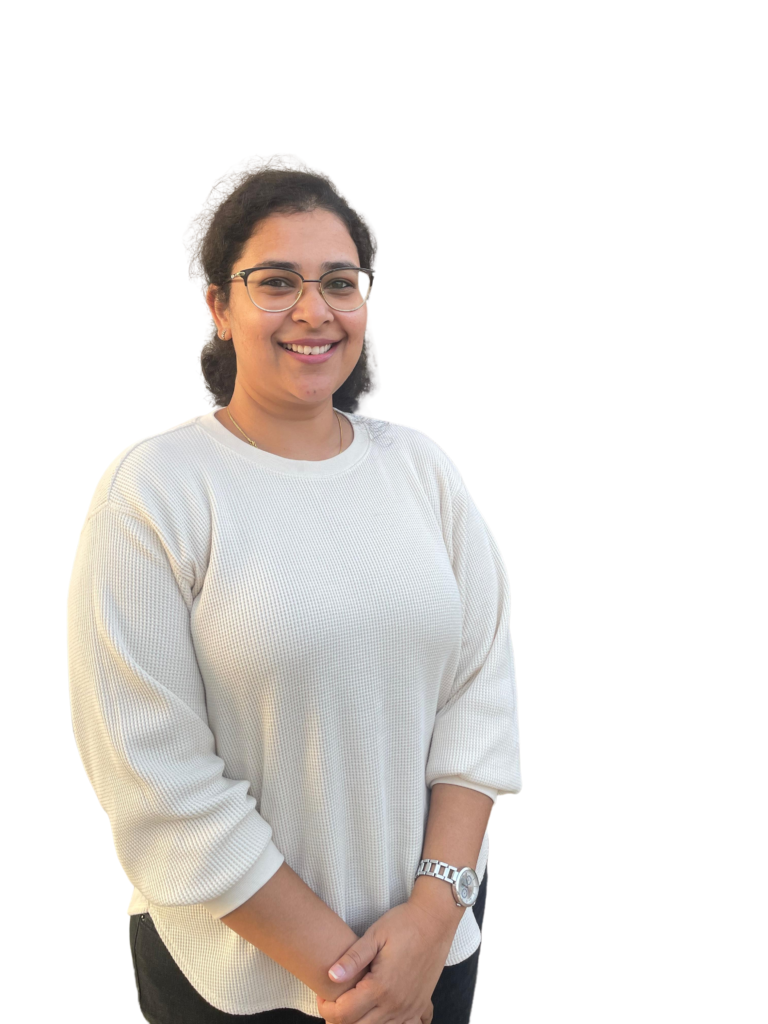
Apoorva Nandish, Guest Editor
Gurgoan, India
Safetipin
Apoorva is a passionate urbanist with a background in Architecture and Urban Planning. She advocates for walkability and inclusive cities, integrating a gender lens into transport planning. Her persistent efforts are directed towards establishing lively urban areas where people are welcomed and feel safe. Apoorva is committed to empowering women’s groups and building the capacity of government representatives to transform cities into safe, people-centric and gender-inclusive spaces. Outside of work, she enjoys exploring unique events, outdoor activities and savoring culinary delights.
Favorite mode of mobility: Walking, hands-down!!! There is so much more you can observe and indulge in the surroundings when walking. Followed by riding in a Bus/BRT and Metro.
How did you get involved with issues of walkability?
Apoorva: I came across the concept of walkability when I was doing my Master in Transport Planning. I was drawn to its advocacy for human-centric city planning. While studying the subject, I was constantly transported back to my early days in South Bombay, India, which supported comfortable walking, vibrant street activities, and convenient access to its public transport systems. Formal studies coupled with lived experiences pique my interest in walkability. Since then, I have been professionally engaged in advising city governments to build streets and public spaces conducive for people to move around and thrive socially.
Each topic (mobility justice, walkability and urban health) is vast in itself and here we are looking at an interplay of all three. That’s mind-blowing! I am curious to know what other global cities are up to, especially in countries with diverse genders and ethnicities. I am also curious to know how practitioners and community activists navigate shaping cities in different countries.
-Apoorva on being part of the guest editorial team for the Cities & Health special issue ‘Walkability & Mobility Justice
What are your interests and main concerns regarding mobility justice?
Apoorva: For centuries, cities have been built for and by able-bodied men. Provisions for children, women and the elderly are rarely made while designing cities. For example, many cities built footpaths but often without a curb ramp for individuals in wheelchairs to access. If a curb ramp exists, they are broken, narrow or inaccessible due to closely spaced bollards. Neither of these even helps women with their toddlers in a stroller to use the footpath. On the brighter side, through years of advocacy, cities are now redesigning their streets and public transport system to cater to all. A city like Kochi in India recently revamped the signage in the core city area (tourist-centric). The designs helped people and outsiders to navigate the city easily. Bangalore revitalized ‘Conservancy Lanes’ to improve walkability and bring back community engagements. In light of Pan-India Challenges, many cities transformed underutilized public spaces into child- and caregiver-friendly parklets. There are many stories of transformation in India, yet many more to go.
How do you view the relationship between walkability, mobility justice and urban health?
Apoorva: I find walkability and mobility justice are physiologically and psychologically interconnected with urban health! Walkability promotes active mobility and offers greater access to the city (for education, employment, and leisure). A walkable city/neighborhood promotes well-being – and reduces the risk of obesity, diabetes, cardiovascular disease, etc. It also humanizes the experience of a city and can benefit mental health – reduce social isolation, forge neighborhood solidarity and enhance safety. On the other hand, mobility justice ensures equitable and safe access to the city (alternative transport modes), especially to those who cannot afford it, are disabled, or to an aging population. Such societies instill healthy habits in people and ensure the provision of resources for the marginalized section of society to reduce health disparities.
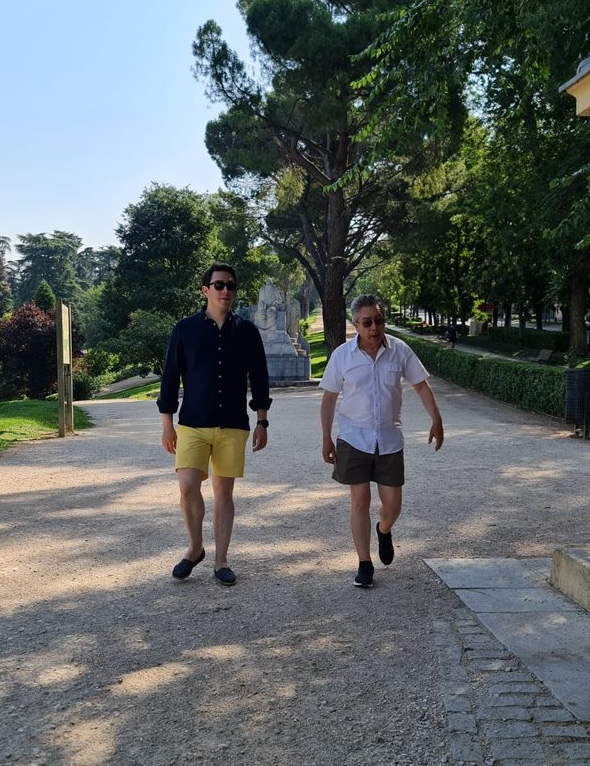
Daniel Oviedo, Guest Editor & Adviser
London, United Kingdom
University College London
Dr Daniel Oviedo is an Associate Professor at University College London’s Bartlett Development Planning Unit (DPU) in the UK. Daniel was trained as a civil engineer and holds an MSc in transport planning and a PhD in development planning. He has over fourteen years of international experience in studying social, economic, and spatial inequalities in urban environments, emphasizing the role of urban mobility in reproducing (in)equality and well-being. Dr Oviedo has experience leading international and interdisciplinary research that engages with vulnerable and disadvantaged communities in urban contexts in Sub-Saharan Africa, Latin America and Europe through participatory methods. Born and raised in Colombia, Dr Oviedo has lived first-hand the consequences of an unequal transport provision and its implications for exclusion.
Favorite mode of mobility: Walking, Cycling
How did you get involved with issues of walkability?
Daniel: Since 2018, I lead the UCL-Osaka Walking Cities Lab, a practice-based research group with partners across the global north and south working toward transforming the un-walkable city and producing grounded and locally-led knowledge about walking in un-walkable cities in Sub-Saharan Africa.
The possibility of engaging first hand with innovative research on walkability and transport justice and collaborating with a diverse and passionate editorial team, taking advantage of all learning and mentoring opportunities.
-Daniel ON BEING PART of the guest editorial team for the Cities & Health special issue ‘Walkability & Mobility Justice’
What are your interests and main concerns regarding mobility justice?
Daniel: My work has focused on unpacking the social consequences of transport disparities, and the principles underlying biased and exclusionary transport planning and supply systems, and the politics behind the maldistribution of means for mobility.
How do you view the relationship between walkability, mobility justice and urban health?
Daniel: Walking is the principal form of urban mobility, while paradoxically, the one that receives less attention in planning, policy, and political circles, leading to inherent injustices in the distribution of space and infrastructure for pedestrians despite its proven benefits for health and wellbeing. Addressing transport injustices while focusing on walking is a straight pathway toward improved global health.
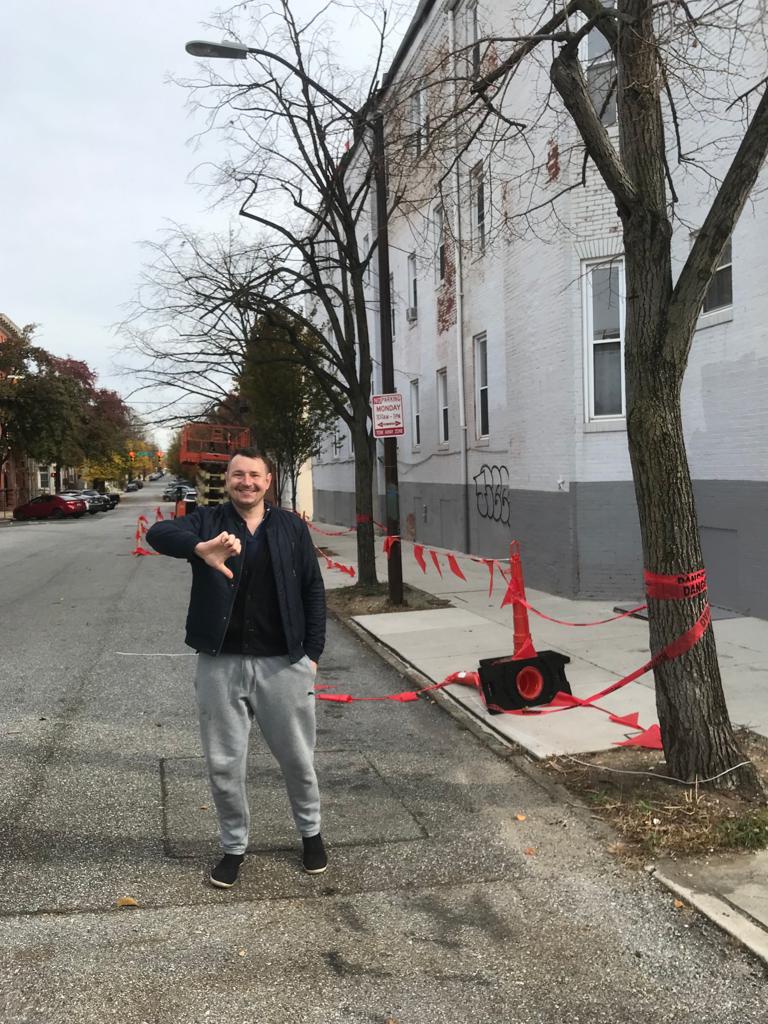
Mateusz Rozanski, Guest Editor
Baltimore, Maryland, USA
Johns Hopkins University 21st Century City Initiative
Mateusz has been an urban green infrastructure practitioner for over a decade. He is currently based in Baltimore and employed by John Hopkins University, where he focuses on climate adaptation methods, especially heat mitigation, stormwater management, citizen science, and sustainable community development. He is the co-founder of the Baltimore Climate Resilience Coalition, which has brought together marginalized Baltimore communities around issues of sustainability, walkability, and health.
Favorite mode of mobility: On foot and streetcars
How did you get involved with issues of walkability?
Mateusz: I got involved because I saw that successful green infrastructure projects in urban environments necessitate excellent walkability. For example, successful pedestrianism and green infrastructure face the same threats: car incursions, heat stress, etc. On the other hand, working in tandem, they synergistically support urban economies, sustainable density, and public safety.
I have the unique experience of having grown up in a dense Central European city where walkability and mobility justices were prioritized . Over the last decade I have learnt to translate this experiences into an ultra urban American environment. I believe this juxtaposition of experiences gives me a keen insight into issues of cross-cultural mobility justice.
-mateusz on being part of the guest editorial team for the Cities & health. special issue ‘Walkability & Mobility Justice’
What are your interests and main concerns regarding mobility justice?
Mateusz: In the marginalized community of color where I live and work, I have witnessed a severe lack of support for walkability. Communities of color are often seen as drive-through/pass-through neighborhoods, whereas more affluent communities are seen as destination neighborhoods.
How do you view the relationship between walkability, mobility justice and urban health?
Mateusz: Neighborhoods that lack sufficient pedestrianism, green infrastructure, and other transit options are often isolated. This isolation often leads to higher levels of crime, pollution, and heat stress. It also limits economic opportunities. All of these factors have a deleterious impact on the health of the residents.
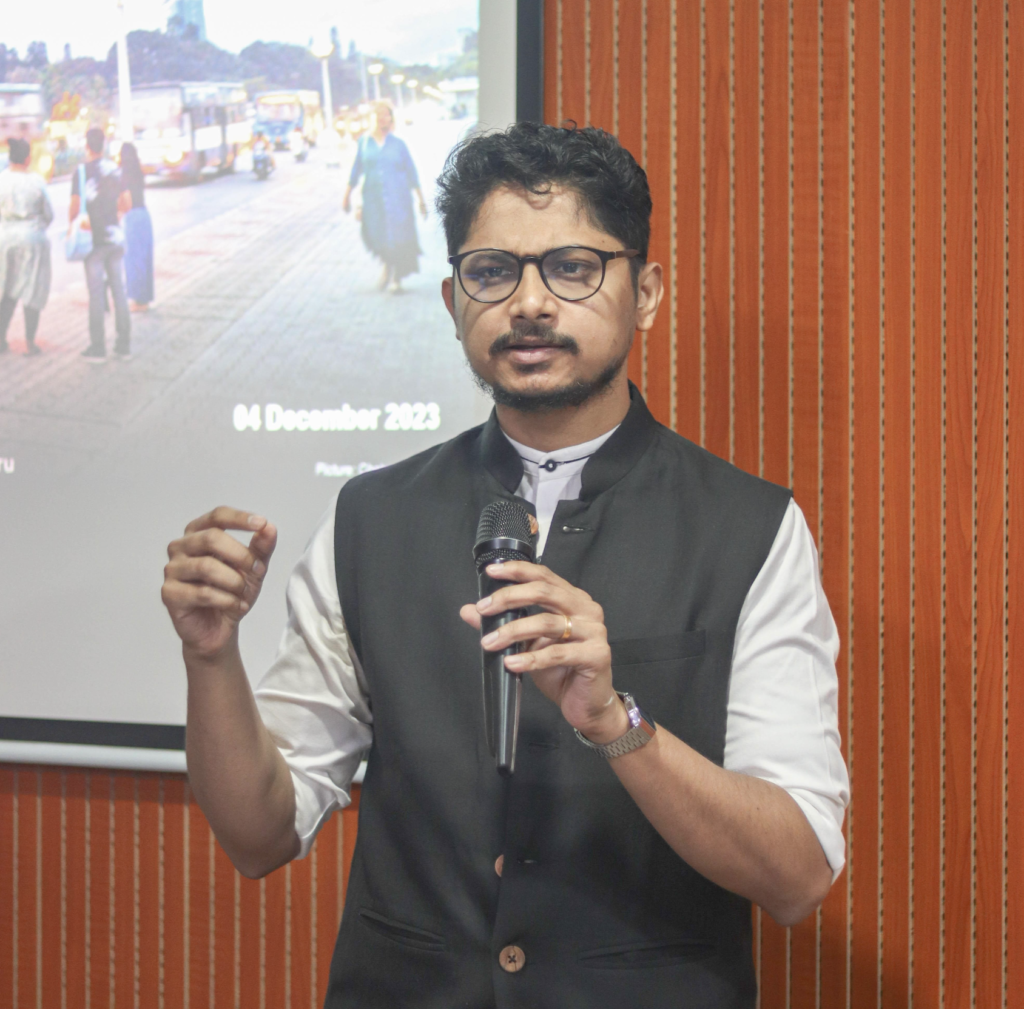
Chetan Sodaye, Guest Editor
Bengaluru, India
WRI India
Chetan Sodaye is a Senior Program Associate at WRI India’s Sustainable Cities and Transport program, where he specializes in urban design, non-motorised transport, with an aim on enhancing road safety and livability in cities. Chetan works out of WRI Bengaluru Office, where his research focuses on improving road safety through placemaking and urban design, and working closely with city authorities for implementation. With over eight years of experience in the urban sector, his expertise spans across Urban Street, and Junction Design, as well as Urban Mobility. In his previous role as Project Lead at PDA Pune, he contributed to key projects like Pune Smart City Inception and Pune Cycle Plan. In Bengaluru, Chetan is dedicated to collaborating with various city agencies and their authorities to implement measures that improve city mobility, safety standards and accessibility for all.
Favorite mode of mobility: Walking, Cycling, Bus, Metro, Micro Mobility services
How did you get involved with issues of walkability?
Chetan: From the beginning of my career, I have been exposed to the realm of urban mobility as my B. Arch College focused highly on Urban issues as a part of our curriculum. Our Urban Design Studio’s outcome was a walkable neighborhood with a focus on NMT Infrastructure. I continued the research further into my Bachelor’s thesis. Later, I was offered a job at Prasanna Desai Architects, an Urban Design firm focusing on walkable and livable Streets. The projects that I led delved around walking and cycling; making healthy neighborhoods. Furthering this experience, I did my master’s in Urban Design from CEPT University, where I got exposed to multiple people-centric explorations through studio and elective projects. I then joined WRI India, where I focused initially on Road Safety in TOD areas, and from then, my work has been in the road safety realm in multiple cities. The works have been under the aegis of BIGRS, Bloomberg Initiative of Global Road Safety.
I am excited to gain more knowledge through experiences of contributors, thrilled to know progress and struggles from various geographies. Get appraised about recent topics of indulgence and interests globally.
-Chetan ON BEING PART OF THE GUEST EDITORIAL TEAM FOR THE CITIES & HEALTH. SPECIAL ISSUE ‘WALKABILITY & MOBILITY JUSTICE’
What are your interests and main concerns regarding mobility justice?
Chetan: I am interested in mobility justice because it affects millions of people’s lives and well-being, and it requires a holistic and inclusive approach to address the challenges of road safety, transportation, climate change, urbanization, migration, and human rights. My main concerns are how to protect the vulnerable road users, improve the road safety data and systems, change the road user behavior and culture, design and improve the road infrastructure and environment, upgrade the vehicle safety standards, foster collaboration and coordination among stakeholders, and address the root causes and inequalities of mobility injustices. I would also like to address the accessibility to safe and affordable mobility solutions to all, regardless of age, gender, caste, geography, religion, class, belonging to developed or underdeveloped regions or color.
How do you view the relationship between walkability, mobility justice and urban health?
Chetan: Walkability, mobility justice, and urban health are interrelated and interdependent concepts that affect and are affected by each other. Walkability is a key feature of the urban built environment that influences people’s mobility patterns and choices and their exposure to environmental and social risks and benefits. Mobility justice is a normative and ethical framework that advocates for the equal and fair distribution of mobility rights and opportunities among all people, regardless of their identity, location, or condition. Urban health is a multidisciplinary and holistic concept that encompasses the physical, mental, and social well-being of urban populations and the interactions between humans and their urban surroundings. The relationship between these three concepts is complex and dynamic, and requires a comprehensive and balanced approach to address the trade-offs and synergies that may arise.
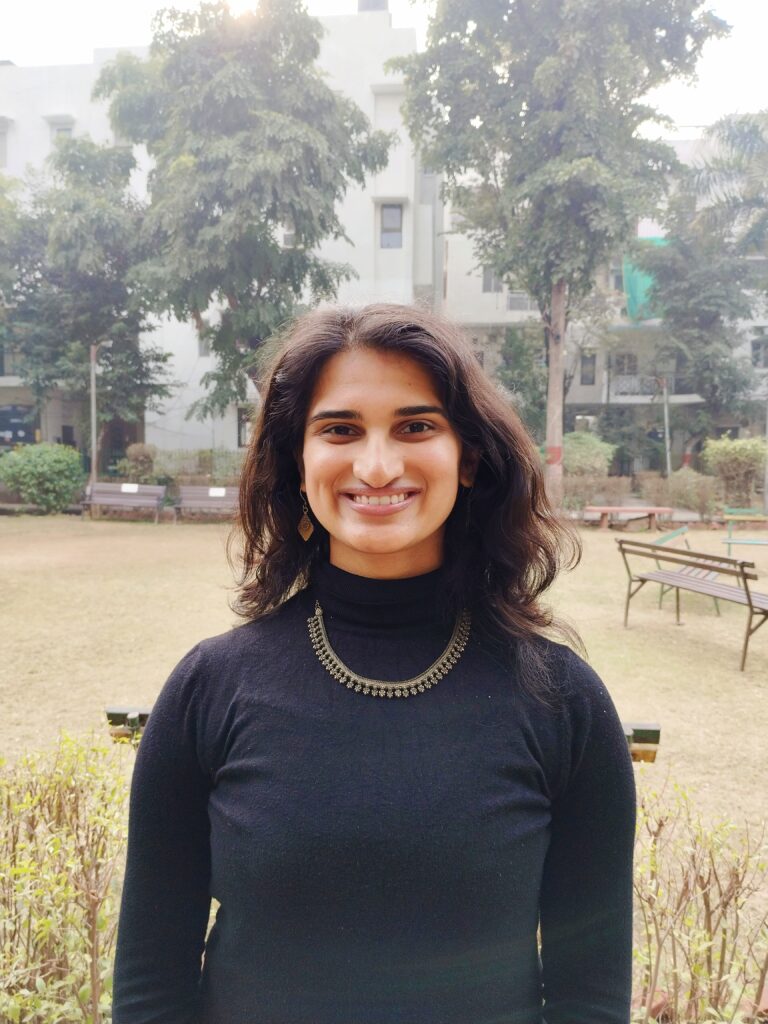
Ansila M. Thomas, Guest Editor
New Delhi, India
Socratus Foundation for Collective Wisdom
Ansila is based in New Delhi and works in the urban systems lab of the Socratus Foundation for Collective Wisdom. Her present work primarily focuses on urban sanitation. Having lived in several different cities, she believes that for most people, urban mobility is an issue that defines what opportunities are afforded to them. She loves exploring cities by walking through neighborhoods.
Favorite mode of mobility: Walking, metro, bus
How did you get involved with issues of walkability?
Ansila: I grew up in a family that loves to go on long evening walks together. Growing up in India, I noticed how vastly the quality of walking infrastructure changed according to where in the city you were positioned. One can move from excellent pavements to a section of road with an open drain in several steps. It is a dangerous scenario and means that I’ve grown up always being told to look down and walk for fear of injury. Therefore, my favorite walking routes became stretches where I knew there were good roads, and I could stare into space all I wanted. Given how equitable walking is as an activity, I see no reason why it shouldn’t be prioritized more in policy and urban infrastructure. In an era of increasing wealth inequality, austerity measures, and a climate crisis, so many of our problems can be solved by prioritizing infrastructure that serves the many.
I’m excited to read about the innovations and efforts being made for mobility justice across South Asia. I am especially keen on reading up on cases that show civil-state partnerships.
-Ansila on being part of the guest editorial team for the Cities & Health special issue ‘Walkability & Mobility Justice
What are your interests and main concerns regarding mobility justice?
Ansila: Accessibility, street furniture, gender, improvised solutions for the lack of infrastructure, civil-state partnerships
How do you view the relationship between walkability, mobility justice and urban health?
Ansila: Mobility justice recognizes that access to different parts of the city is not equally available to all. Factors of disposable income, class, caste, and gender all come into play when dealing with how people get around cities. Walkability in cities is a huge opportunity to make inroads in population health (across gender, class, and age barriers) and improve the quality of life in cities. When services are within walking distance for a population, it has multi-sectoral implications for the city. It encourages shopping locally, is better for the environment, and ensures staying activities on streets that lead to more lively and liveable cities.
Call for Submissions
Submit a Manuscript to the Journal Cities & Health for a Special Issue on Walkability & Mobility Justice: Planning for walkable, equitable & healthy communities across continents, countries & cultures
